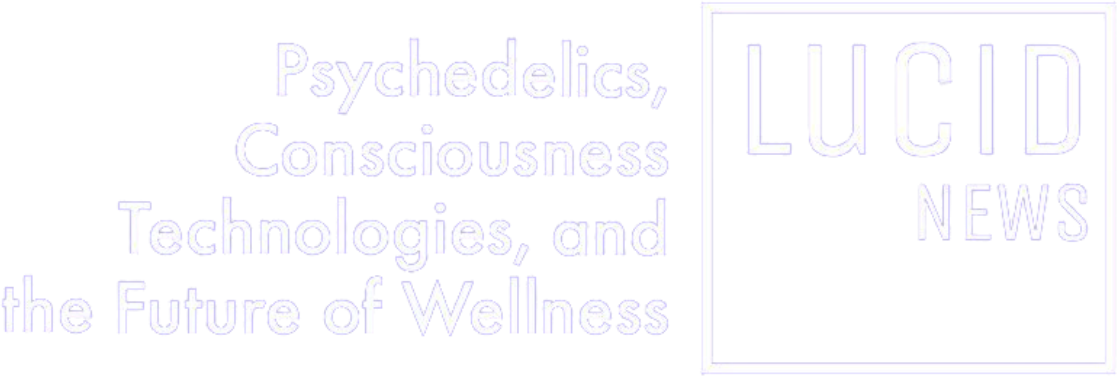SXSW Hops on the Psychedelic Hype Train

This past weekend, the psychedelic community congregated in Austin to network, party, and one up each other on how much money their companies have lost in the public markets over the last two years.
The “psychedelics industry” was on full display here in Austin, Texas, the live music capital of the world, with virtually no live music to be had at the event.
At some point, we all decided it was best to discuss patent strategy and FDA approval processes in stuffy fluorescent lit rooms instead of dropping acid and having orgies in the mud. Call it a maturing process, but Roky Erickson is rolling in his grave right now.
Find Your Tribe
My first impressions of the conference itself were largely colored by the insane line for registration that you’re confronted with upon entering the Austin Convention Center. The line was longer than anything even Keith Richards or Lemmy could handle.


For a convention center full of tech companies pitching world changing AI solutions, the check in process was painfully luddite. If there’s one thing in the world that screams “psychedelic,” it’s missing a Paul Stamets keynote on “How Psilocybin Mushrooms Can Help Save The World” because you’re standing in a multi-hour long queue for a physical badge that you already checked in for online.
Once you get past the initial bottleneck, things start to pick up a bit. The mantra I abide by on the conference circuit is “find your tribe.” SXSW is so massive and disorienting that it can not be properly tackled solo; as soon as I connected with my people, everything started to click. There’s probably a metaphor for psychedelic integration best practices in there somewhere.

The psychedelics track took place upstairs on the 3rd floor of the convention center in the smaller rooms, giving everyone present an opportunity to chat face to face with panelists and other members of the psychedelic community. This is the real value of these conferences: to have representatives of dozens of different companies, campaigns, and underground novel molecule laboratories within the space all present in one place. It enables a level of personal connection and dialogue that is impossible to replicate digitally. You can do an entire year’s worth of networking and relationship building before and after a single panel if you’re diligent and shameless enough. If it’s clout you’re chasing, there is a plethora of it to be harvested at SXSW.
The Placebo Effect
The panels themselves offer very different focuses and motivations, ranging from “Beyond The Hype: The Business of Psychedelics 2.0” to “Athletes and the Psychedelic Edge” to “Psychedelic Tech” to my personal favorites, “Music as Medicine: Music as a Tool for Healing” and “The Role of Psychedelics in Music.”
I soaked up a good deal of information throughout the dozen panels I attended, but the most impactful tidbit I walked away with was a discovery of the “Ricaurte Retraction,” a boondoggle whereby a test group of primates in a lab were accidentally given a lethal dose of methamphetamine instead of a moderate dose of MDMA following a label mix-up in the laboratory, leading to MDMA being further vilified as a danger to society. Those poor monkeys, born into a world dominated by idiotic primates, never stood a chance.
The programming highlight of Friday for me was the “Music as a Tool for Healing” panel featuring Numinus CEO and Founder Payton Nyquvest, Reid Robison of Numinus, musician East Forest, and my friend Charlotte James of the Ancestor Project and Psychedelic Liberation Training. The panel dove into interesting territory around epigenetic and ancestral memories, and the ways sound can help catalyze and guide psychedelic experiences. For example, music from the ancestral homelands of a person could potentially serve to reconnect them with suppressed memories, while psychedelic playlists of the future might be curated to suit individuals, rather than taking a one-size fits all approach.

On Friday evening, I attended the Last Prisoner Project party on the top floor of a spectacular high rise situated above the Austin Skyline. LPP is on a mission to fight criminal injustice and reimagine drug policy, which is a just and beautiful cause for us stoners of the world to unite around.
I attended exactly one panel at the conference on Saturday thanks to a litany of invitations to more social and interactive events with psychedelic community members, including an opportunity to dive into some true Texas BBQ brisket in celebration of Julia Mirer’s birthday.
On Saturday evening, I attended the Psychoactive Rising event hosted by Vicente Law Firm and Grasslands Agency in support of the Microdosing Collective, the “only non-profit dedicated to advancing and protecting the right to microdose.” The event featured an excellent taco bar and inspired cocktails, which is the quickest way to my wallet as a non-profit. Don’t tell Microdosing Collective and Into the Multiverse co-founder Alli Schaper, but I’m soon to launch a new venture called the Nanodosing Collective – we advocate for people’s right to take 1/1000th of a microdose, to fully connect with the placebo effect.
The one afterparty that I missed that gave me FOMO was the Palo Santo venture fund function, which overlapped with my next psychedelic socialite commitment. I’m going to start including “VC” next to my name while on the conference circuit – that way I’ll get invited to even more exclusive parties, and can dial in more free swanky dinners. Eventually, I’ll reach a level of exclusivity where the only people surrounding me are bald white men whose companies produce phallic shaped rockets.
I was “Tripping Rick Doblin”
The non 2C-B ingestion related highlight of my time at SXSW was definitely the Good Trip Live: A Night of Comedy and Psychedelic Stories event put on by the Good Trip team on Saturday night.
We were treated to the comedic stylings of an up and coming comic from the Boston scene who goes by the stage name “Ricky D,” birth name Rick Doblin, PhD. He had his work cut out for him, sharing the spotlight with seasoned Netflix professionals. But Ricky D very much held his own as he effortlessly regaled the audience with tales from the crypt, sharing a unique trip report involving LSD, voodoo, and getting arrested in a New Orleans graveyard in the 70’s. From now on, instead of saying “tripping balls,” I’ll just say that I was “Tripping Rick Doblin.”
Hamilton Morris made an appearance on stage to help ground the controlled chaos in his typically understated style, advising the audience on the nuances of his preferred set and setting for synthetic 5-MeO-DMT ingestion when in Mexico City. It turns out that Hamilton’s preferred trip sitter in this context is actually a gynecologist, which actually sounds much better than blasting off under the supervision of a Tuluminati Tik Tok Shaman in Tulum.


Compared to panels about the industry and research, psychedelic satire and comedy offers immediate, tangible benefit. No hype train or forward looking statements – unless you count Eric André looking the crowd dead in the eyes while he states that his father randomly got an adult circumcision without telling his mom beforehand.
Reggie Watts’ improvisational genius was on full display as he effortlessly switched between masterfully commanded accents and impressions, interjecting beatbox loops and ursprache style guttural intonations. It’s like if the Tower of Babel had an afro.
I was interviewed by Good Trip director Donick Cary after the show, and Reggie popped up to briefly join me in the limelight. I don’t know what was written into the fine print of the waiver they had me sign, but my butthole has been awfully sore for no discernible reason the last few mornings. There could be a succubus element at play here.
Speaking of folkloric sex demons, I had the pleasure of meeting Incubus frontman Brandon Boyd after he spoke on the “Role of Music in Psychedelics” panel alongside Laurel Stearns of Desert Daze, Brandon Deroche of Propeller, and Devon Phillips of MAPS. Seventeen-year-old me would not believe the situation I’ve arrived at: Hanging out with one of my favorite rockstars while covering psychedelics professionally.
The Psychedelics Industry Needs More Foreplay
Speaking of “pinch me” moments, the Psychedelic Puppet Show debuted to the world while I was here at SXSW. I’m a producer on this project, and our first episode featured an AI animated conversation between Paul Stamets and Rick Doblin. The Psychedelic Puppet Show is an open source community creating educational, artistic, and fun content on psychedelic science, therapy, spirituality, and history, and seeks to infuse an atmosphere of playfulness and fun into the mainstreaming of psychedelics. It’s something we desperately need more of as an industry as we collectively usher psychedelics from their underground pariah status into the limelight on the global stage.
More than anything, what the psychedelics track at SXSW delivered is more hype. The recent implosion of the Synthesis Institute, this past week’s shuttering of Ketamine Wellness Centers, and the crash of the SVB bank – which has money from the psychedelic industry ecosystem tied up in it – are sobering symptoms of a precarious industry landscape that calls into question whether or not the “move fast and break things” ethos to scaling a company, or an industry, is an appropriate route for this unique space. Every single one of the 50 or so publicly traded psychedelics companies have been hemorrhaging money over the past two years.
Depending on who you talk to, the psychedelics industry is projected to be valued at between $2.5 and $500 billion dollars within the decade, with some in the space touting it as a forthcoming trillion dollar market. This is great for satire, but generally bad for financial projections and business plans. I’ll stick to what I know, which is that eating mushrooms and listening to beautiful music in a safe space is the furthest thing from “industry hype.”
First the Horse, Then the Cart
Alas, the psychedelics industry, and SXSW at large, promises the moon while failing to address the chronic unhoused population and mental illness epidemic in their own backyard.
When you have to step over hypodermic needles and human feces to attend a panel on how ketamine therapy interfaces with insurance companies, one imagines that the cart might be a little far ahead of the horse.
At least I can put on a VR headset in the exhibition hall and walk around a futuristic version of Austin that has friendly holograms in place of the desperately mentally ill, unhoused humans surrounding the lot I’m parked in.
Regardless of wherever the psychedelics industry is headed, I’m happy to report that psychedelics are still fucking awesome. I find them best used with reverence for the mystery of life, which includes all manner of bedazzlement and ineffable spectacle, including the justification for the $1,500 price tag of the psychedelics track tickets at SXSW.
Featured Image: Rick Doblin and Matt Zorn at SXSW’s “How to Study the Government’s ‘Most Dangerous’ Drugs?” Panel. By Nicki Adams using adapted photo from Dennis Walker.











